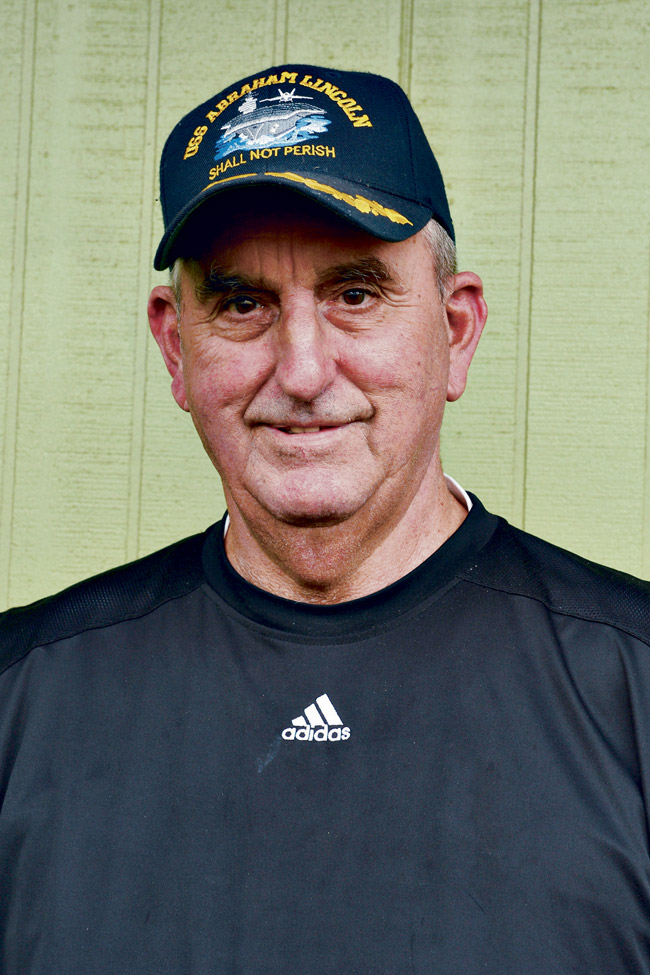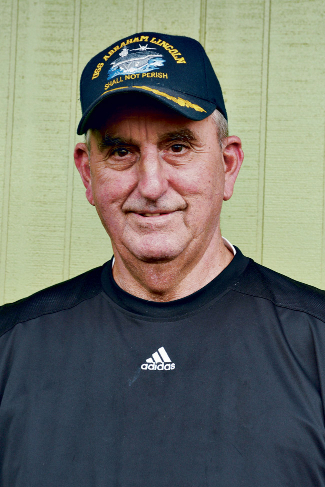Radiation Survivor Speaks Out
Terry Scheidt
Radiation survivor and victim advocate
Editor’s note: The following interview is with a reader who contacted Rasa Fournier in response to the Dec. 12 Doctor in the House column on radiation exposure in the Pacific Islands. Terry Scheidt worked at ground zero during U.S. nuclear testing exercises in the Pacific. Here is his firsthand account of the fallout from that experience.
What brought you to the Pacific Islands?
I was assigned to Johnston Island, ground zero, in 1962 and ’63. I am now 75 years old. I was in the U.S. Navy and my profession was communications. Upon leaving the Navy, I was called by a Navy contractor working for the Pacific Missile Range, which encompassed the Mid-Pacific region. The range provided development of intercontinental missile capabilities. That is how I was assigned to Johnston Island.
At Johnston Island, I was a communication specialist, running communications for the Radar Missile Tracking Station. I spent approximately one year at Johnston, which encompassed atmospheric nuclear testing and missile tracking, in which most missiles were long-range, launched from California. This assignment was working for the Department of Defense, U.S. Navy.
Can you give a brief description of life on the island?
The island is 15 to 20 feet high, and the ocean breaks at the edge of the reef, which lies approximately 200 to 300 yards from the shore. The only thing keeping the ocean from the island itself is that reef. There was a runway, which could only accommodate piston-driven aircraft at the time. We used to land holding our breath that the breaks would hold, or else we would have wound up in the ocean. Every other day a flight would arrive that went to all the islands. It was quite comical – when a plane came in, the entire island community would go the terminal to see the people.
There were no women on-island. Our pastimes were watching movies, bingo nights, the Waikiki Club, the O club and diving. The island reef was abundant with exotic coral. The span of the tabletop coral would reach 4 to 5 feet. When placed in bleach it became brilliant white, so some local boys would send it home for resale to tourists.
We also did intra-activity sports such as volleyball and softball.
To get to Johnston took 2.5 hours on a four-engine piston aircraft, or four hours by slower aircraft. I was rated the equivalent of a commander in the Navy. I got to live in the apartments, not like others who lived in barracks. The food was extremely good and of high quality and quantity. We had abundant fresh fish, which was cooked every night at the Waikiki Club. I had my own personal jeep and could drive around the island, a five-minute drive. Most of the support personnel were local Hawaii people. They would go home once a year and lived the rest of the time on the islands.
At what point were you exposed to radiation? Were you aware of the associated health risks?
I was quite loyal to the efforts of America, as it was the Cold War era, a frightful time with the Soviets and Americans trying to gain superiority in missile programs. While I was stationed in Johnston, I had no concerns of danger to my health. It wasn’t until many years later that I learned many workers were getting cancers from radiation exposure, and I realized that I was a victim of radiation exposure. I had gotten Stage IV cancer of the bladder and prostate, which are recognized cancers from radiation exposure by the Department of Energy. I survived my cancer, but not without loss of my bladder and prostate.
Since the early 1950 testing in the Marshall Islands, the U.S. chose a course of non-responsibility by failing to provide necessary medical treatment to many who were exposed. In 1990, America finally accepted its actions and passed Department of Energy and Department of Justice acts. Sadly, most victims were denied medical assistance because of exclusionary clauses in the acts. To this day I have received no medical assistance. Our Congress is aware but fails to assist. I write to our delegates each year to amend the failure of these acts, but every year they die in committee. An article in the Rocky Mountain News, “Workers Die Waiting,” covered our plight.
When I was assigned to the test site I was never informed of the risks of being there. I did notice parts of the island marked off with the Radiation Hazard Area signs. I was given a film badge to wear at all times, which alerts you if you are exposed to radiation. I learned later the badges were defective.
One unusual thing: 48 hours prior to each detonation, all island support personnel were evacuated 200 to 300 miles downrange. My detachment remained at ground zero, as we provided tracking safety for high-altitude launches. Three tests failed, for which the launch rocket exploded and the radiation debris was scattered over the island, reefs and reef waters. The collected debris was buried on-island, which further contaminated the island, along with the reef waters and sea life. Our fresh water was made from the seawater. What were we drinking? The reef was ultimately used to enlarge the island runway, alas further contamination.
While extending the runway, many local boys who worked the dredgers brought in from the Gulf Coast never realized they were being exposed. I also never knew, as each day I would walk the newly dredged areas for seashells not realizing the danger. No one was ever told of the danger. I have only talked with one person I worked with since, a helicopter pilot who was assigned to one of our tracking ships that participated. The pilot did get cancer of the lymph glands and was denied medical coverage.
There are many more stories and facts. I could go on and on, but just as with what happened to the Marshallese, nobody really cares. Most people are ignorant of what took place. I chose not to dwell upon what happened and I live on, but I will not give up trying to get my country to recognize those who gave and are denied. I am only one person and have learned my efforts are useless. Looking back, I lived a most-exciting life, as after my work at Johnston Island I participated in landing our astronauts on the moon, for which I received many awards. I worked for NASA for six years until the lunar landings stopped.
Any final thoughts?
It has been 50 years since working on Johnston. The island has been closed and leveled, and all evidence of inhabitance is gone. After the nuclear testing the island was used as a chemical and biological disposal location. They had built several high-level incinerators. I do not know what they did with that waste. The half-life of the radiation is approximately 25,000 years, so I don’t think many people will visit Johnston Island.
I am sadly disappointed that my nation failed to take care of the people they harmed. There is not one member of our Hawaii congressional delegation who does not know of the radiation victims, but they will not pass legislation to assist those victims. The Marshallese are innocent victims who can never return to the islands of their ancestors. Although our country never intended harm, because of their failures they injured so many innocent people without regard to providing assistance.
Each year I remind my Hawaii delegation of their responsibility to victims’ needs, with rarely a response. I am saddened that they passed compensation for foreign non-Americans before they take care of their own. I write the president several times a year asking to use his executive authority, which he does not respond to.
I have had to pay for all medical costs to live. My final thought is: “I will die waiting.” I must wear an ostomy pouch to collect my urine, so each and every day I am reminded of what happened only because I served my country.







